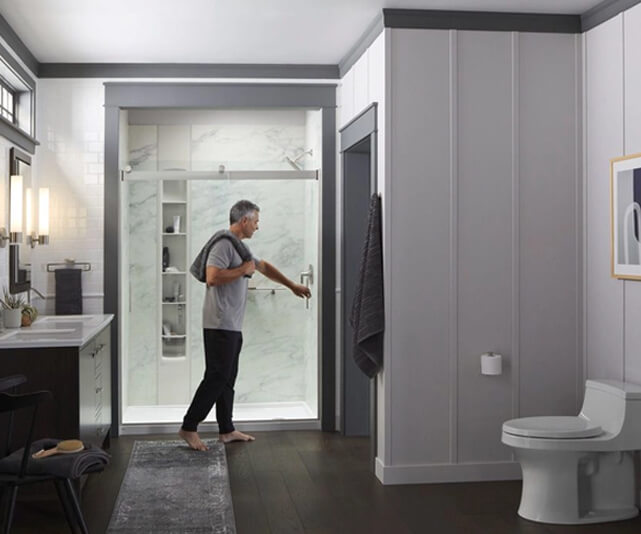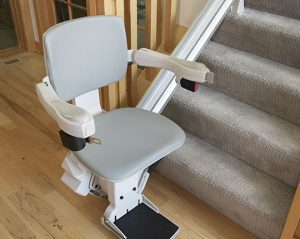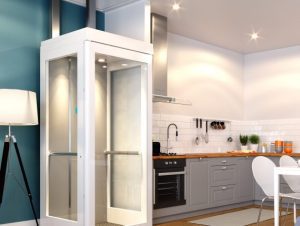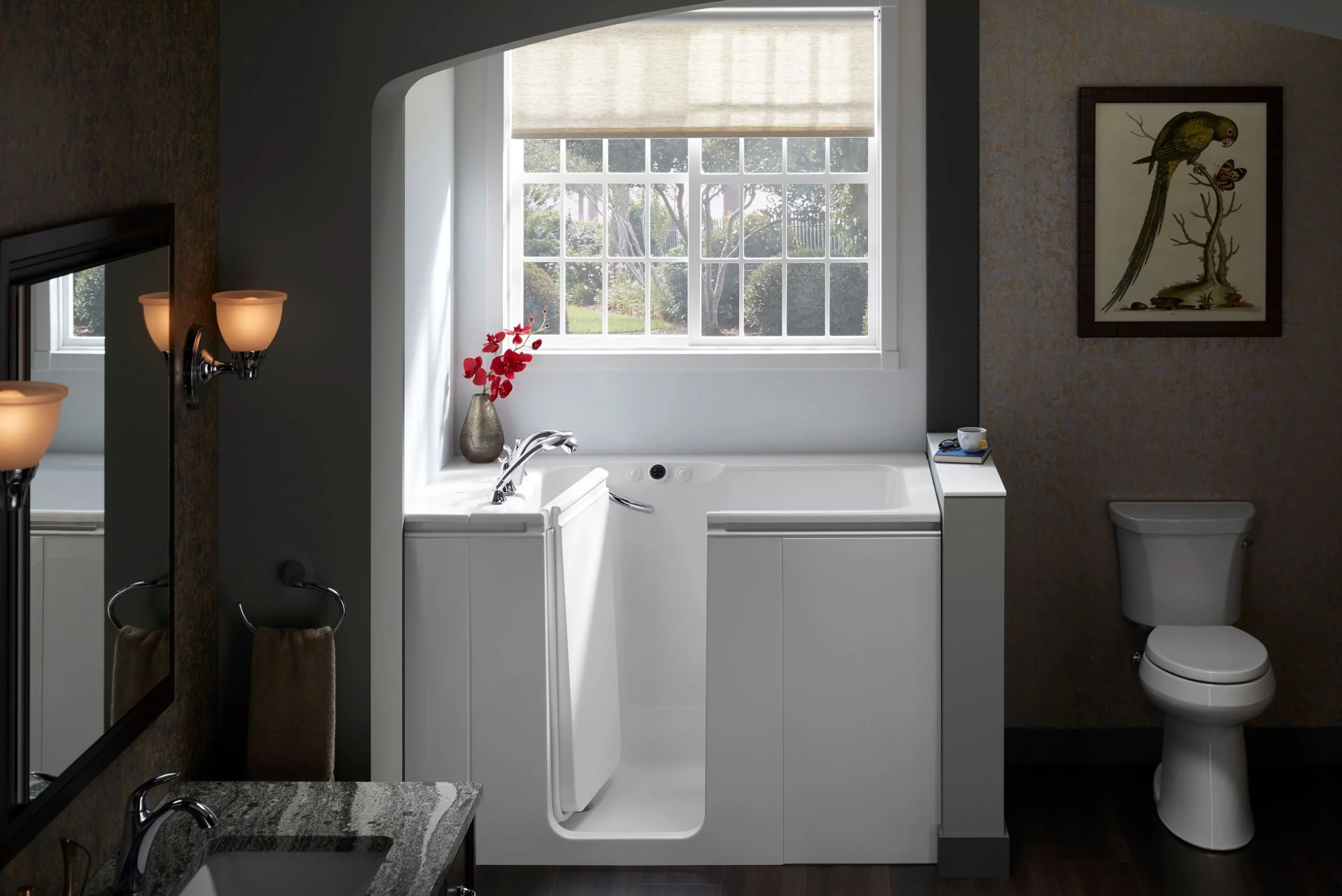Many people wonder if Medicare helps pay for walk-in tubs. Sadly, original Medicare does not cover walk-in tubs. Our article will guide you through alternatives and options for financial assistance.
Keep reading to find out more.
Understanding Medicare Coverage for Walk-In Tubs
Medicare generally considers walk-in tubs as home modifications rather than durable medical equipment. This distinction often results in walk-in tubs not being covered by traditional Medicare plans.
Medicare’s definition of durable medical equipment (DME)
Medicare categorizes durable medical equipment (DME) as items that serve a medical purpose, can stand up to repeated use, and are suitable for a home setting. This includes things like wheelchairs, hospital beds, and oxygen equipment.
These items must be prescribed by a doctor or authorized healthcare provider to qualify for coverage under Medicare Part B. The criteria ensure the equipment is necessary and appropriate for the patient’s condition.
Walk-in tubs, despite their utility in providing safer bathing options for seniors and people with mobility issues, do not fit into this category according to Medicare’s standards.
Since they are not seen as essential medical equipment that could be used by multiple individuals over time or easily rented out, walk-in tubs fail to meet the specific requirements set out by Medicare for DME coverage.
This distinction means that original Medicare does not offer reimbursement or cover costs associated with purchasing or installing walk-in bathtubs in homes.
Why walk-in tubs may not be covered
Shifting focus from the strict criteria for durable medical equipment (DME) set by Medicare to walk-in tubs unveils a significant coverage challenge. Walk-in tubs, despite their popularity and utility in providing accessible bathing solutions for seniors, fall into a gray area with Medicare.
They are often seen as convenience items rather than medically necessary equipment. This distinction makes them ineligible under Original Medicare’s standard provisions.
The policy categorizes essential health-related devices differently from home modifications aimed at convenience or comfort, placing walk-in bathtubs outside of its coverage scope.
While some may argue about the necessity of such features for individuals with mobility issues, Medicare maintains its stance that these do not qualify as DME. Consequently, homeowners seeking financial assistance through this federal program might find themselves facing hurdles due to these classifications.
In contrast, select Medicare Advantage plans could provide limited coverage options under special circumstances, reflecting a slight variation in how different programs address accessibility needs within the home.
Other Financial Assistance Options
If Medicare doesn’t cover walk-in tubs, don’t worry. There are still many ways to get financial help for making your bathroom safer and more accessible.
Medicare Advantage Plans and walk-in tubs
Medicare Advantage plans may offer coverage for walk-in tubs, a benefit not typically found in Original Medicare. These plans are an alternative to the traditional Medicare and provide additional benefits, including possibly some forms of home modifications for safety.
These policies can differ greatly between providers, so homeowners should review each plan’s specifics regarding senior home safety modifications and accessibility equipment coverage.
Exploring these options requires contacting your Medicare Advantage plan provider to understand what assistance might be available for elderly bathroom safety equipment like walk-in tubs.
Some plans recognize the importance of such features in maintaining independence and reducing fall risks at home, thereby offering financial support under their benefits for home health care equipment coverage.
Medicaid’s policy on walk-in tubs
Medicaid often supports the cost of walk-in tubs more than Medicare because it serves people with limited income who might need financial aid for bath safety products and home modifications, including accessibility equipment like walk-in tubs.
This public health insurance program recognizes the importance of ensuring mobility aids are accessible to those in need to maintain a safe home environment.
Each state has its own rules about Medicaid benefits for items such as walk-in tubs, making eligibility requirements vary. Homeowners looking for disability assistance or elderly care assistance through Medicaid must check their specific state policies on health insurance coverage for these types of modifications.
State programs may offer support under the umbrella of low-income support services, depending on an individual’s situation and the state’s definition of necessary medical equipment and home adaptations.
Veterans Benefits for walk-in tubs
Veterans seeking help with bathroom modifications can explore veterans benefits for accessible fixtures like walk-in tubs. The VA provides financial assistance through grants, making it easier for those who served to afford these important home upgrades.
It’s essential to know that while the VA supports the purchase of walk-in tubs, models with jet features do not qualify for coverage. This distinction ensures veterans get the aid they need while adhering to the guidelines set by the VA.
Grants are available for aging and disabled veterans requiring special accommodations in their homes. Assistance for disabled veterans includes funding for senior-friendly bathroom upgrades ensuring safety and accessibility.
Exploring these options can greatly benefit veterans wanting to enhance their quality of life at home without worrying about mobility issues in their bathrooms.
Tax deductions for walk-in tubs
Homeowners can take advantage of tax deductions for walk-in tubs if these improvements are made for medical reasons. If a doctor recommends installing a walk-in tub to aid with mobility issues or other health conditions, you might qualify for a deduction on your taxes.
This falls under the category of home modifications done for medical purposes, which can be included in your medical expense deductions.
To ensure eligibility for these tax deductions, keep all receipts and documentation related to the purchase and installation of the walk-in tub. The IRS allows homeowners to deduct unreimbursed expenses that exceed 7.5% of their adjusted gross income (AGI).
This means if your adjustments and other qualifying medical expenses surpass this threshold, part of your investment in safety and accessibility could help lower your taxable income.
How to Get Reimbursement for Your Walk-In Tub
To get reimbursement for your walk-in tub, start by submitting a claim to Medicare with the required documentation, showing it’s a necessary medical expense. Keep exploring to learn about more ways to cover costs.
Steps to take for Medicare reimbursement
Getting Medicare reimbursement for a walk-in tub can be challenging since they’re not typically covered as medically necessary durable medical equipment. However, with the right approach and documentation, you may still pursue a claim for financial assistance under certain conditions. Here are the steps to guide you through that process:
- Start by consulting with your healthcare provider to determine if a walk-in tub is essential for your specific health condition. This step is crucial because Medicare requires a medical diagnosis that proves the necessity of the walk-in tub for your well-being.
- Gather all necessary medical records and a written prescription from your doctor indicating the medical reasons for needing a walk-in tub. These documents should clearly show how this equipment will help manage or improve your health condition.
- Research and understand the coverage details of your specific Medicare plan. Since original Medicare may not cover walk-in tubs, look into Medicare Advantage Plans which might offer broader coverage options, including some aspects of home modifications.
- Submit a formal request or claim to Medicare or your Medicare Advantage Plan provider, including all collected documents: the prescription, detailed explanations from your healthcare provider, and any receipts or cost estimates for the purchase and installation of the walk-in tub.
- Wait for a response from Medicare regarding your reimbursement request. Be prepared; it might take some time to process. During this waiting period, keep copies of all communications and submissions made in case they are needed later for appeals or further clarification.
- If Medicare denies your claim initially, don’t get discouraged immediately. Look into the appeal process outlined by Medicare or your plan provider. You will need to submit an appeal letter along with any additional information that could support why this equipment is necessary for you.
- Explore other financial assistance options simultaneously, such as Medicaid coverage for walk – in tubs, government grants specifically aimed at home modifications for health reasons, or even tax deductions that could offset part of the cost.
Completing these steps does not guarantee reimbursement but provides a structured approach towards seeking financial help from Medicare for acquiring a walk-in tub when it’s deemed medically necessary.
Contact Caliber Home Solutions
Original Medicare typically does not cover walk-in tubs, leaving many without this beneficial option. Some Medicare Advantage plans may offer partial coverage, providing a possible solution.
Medicaid and Veterans Benefits present additional avenues for financial assistance. Applying for tax deductions can also help offset costs. Exploring all these options offers practical ways to improve bathroom safety and independence.
If you are interested in installing a walk-in tub in your home, get in touch with Calier Home Solutions!
FAQs
1. Does Medicare cover walk in tubs?
No, Medicare typically does not cover the cost of walk-in tubs as they are considered personal convenience items.
2. Can I get any financial help from Medicare for a walk-in tub?
Medicare might help pay if the walk-in tub is deemed medically necessary, but this is rare.
3. Are there other ways to get help paying for a walk-in tub?
Yes, Medicaid or other state programs may offer assistance for those who qualify based on medical need and financial situation.
4. Will my Medicare Advantage plan cover a walk-in tub?
Some Medicare Advantage plans may offer benefits that cover home modifications, including walk-in tubs, depending on your plan’s specifics.
5. How can I find out if my situation qualifies for any coverage or assistance with a walk-in tub?
You should contact your insurance provider directly to discuss your specific needs and see if you qualify for any coverage or financial assistance programs available.





